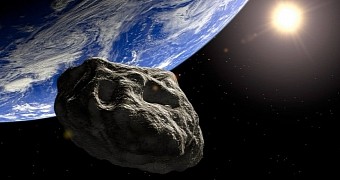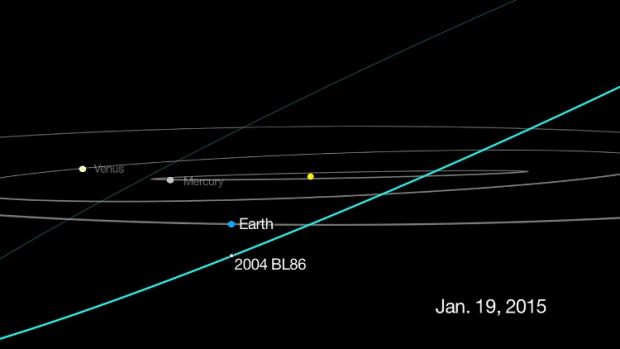About a week and a half from now, Earth will receive a visitor from outer space. Thus, astronomers say that, come January 26, a ginormous asteroid will buzz by our planet. Fear not, the chances that this space rock might smash into us are slim to none.
As detailed by NASA scientists, its closest approach will bring the asteroid within 1.2 million kilometers (roughly 745,000 miles) of our planet. This is the equivalent of about three times the distance between Earth and the moon.
The January 26 asteroid flyby is one for the books
Based on how much light it reflects, astronomers estimate that the asteroid measures about 0.5 kilometers (some 0.3 miles) across at its widest point. This makes it a pretty impressive space rock.
In fact, it is said that, when it finally passes by Earth on January 26, the asteroid will officially become the largest space rock ever documented to come as close as 1.2 million kilometers (745,000 miles) to our planet.
The bad news for 2004 BL86, as this space rock is named, is that it will not get to keep this title for long. This is because one other humongous asteroid dubbed 1999 AN10 is expected to come freakishly close to Earth in 2027.
“The flyby of 2004 BL86 will be the closest by any known space rock this large until asteroid 1999 AN10 flies past Earth in 2027,” NASA scientists explain in a statement.
This space rock that will visit our planet later this month was first documented on January 30, 2004, with the help of a telescope of the Lincoln Near-Earth Asteroid Research (LINEAR) survey in White Sands, New Mexico.
Astronomers say that, having taken the time to study its behavior and flight patterns, they found that it would most likely not get anywhere near our planet for at least a couple of centuries following this month's flyby.
Astronomers cannot wait for the asteroid to approach us
As mentioned, the space rock does not pose a risk to Earth. Still, this does not mean that its approach will go unnoticed. On the contrary, NASA scientists are getting ready to study it in the hope of learning more about is makeup and shape.
In fact, word has it that they even expect to obtain some images of the space rock as it travels through space past our planet. These images should become available the day after the flyby.
Commenting on why it is that astronomers cannot wait to have a closer look at 2004 BL86, researcher Don Yeomans pointed out that “Not only did asteroids provide Earth with the building blocks of life and much of its water, but in the future, they will become valuable resources for mineral ores and other vital natural resources.”
“While it poses no threat to Earth for the foreseeable future, it's a relatively close approach by a relatively large asteroid, so it provides us a unique opportunity to observe and learn more,” the astronomer went on to explain.

 14 DAY TRIAL //
14 DAY TRIAL // 

